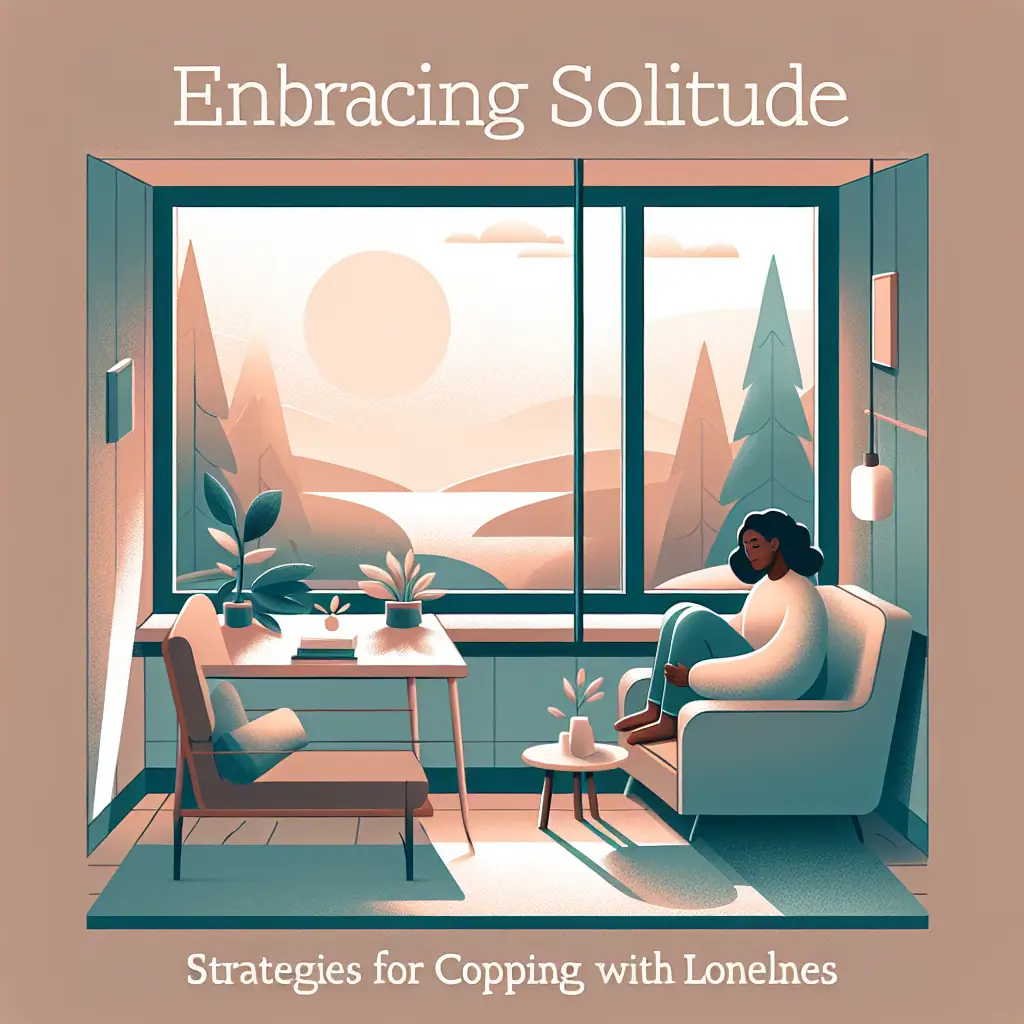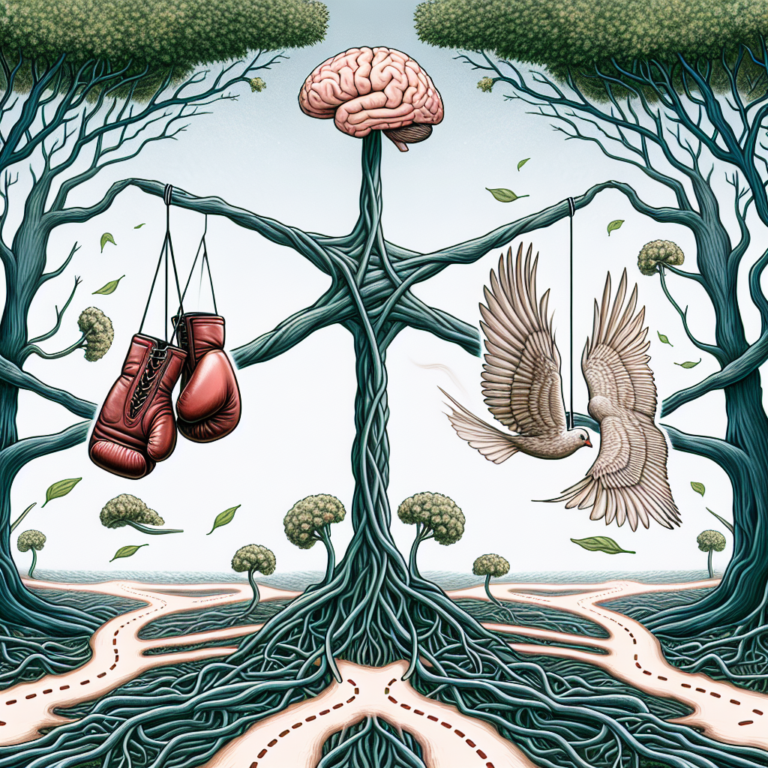
Embracing Solitude: Strategies for Coping with Loneliness – The Ultimate Guide
Introduction
Loneliness has become an epidemic in today’s digitally-connected society. Ironically, despite being surrounded by people and interactions, many feel an overwhelming sense of isolation. At some point in our lives, each of us may grapple with feelings of loneliness, prompting us to seek effective ways of coping. However, instead of viewing solitude solely as a negative experience, we can embrace it as an opportunity for growth and self-discovery. "Embracing Solitude: Strategies for Coping with Loneliness" is not just about enduring loneliness; it’s about transforming it into a tool for self-improvement and emotional resilience.
In this comprehensive guide, we will explore varied strategies for embracing solitude, delve into relatable case studies showcasing real-world applications, and provide valuable insights to help you cope with loneliness in a constructive and healthier manner. By embracing solitude, you can unlock a newfound appreciation for your own company, thus paving the way for lasting fulfillment.
Understanding the Nature of Loneliness
The Psychological Landscape of Loneliness
Loneliness is not merely the absence of companionship; it’s an emotional state characterized by a profound sense of disconnection. Researchers have classified loneliness into two main types: social loneliness and emotional loneliness. Social loneliness occurs when one feels isolated from a broader social network, while emotional loneliness arises from the absence of meaningful relationships. It’s essential to recognize the type of loneliness you are experiencing to implement appropriate coping strategies.
Case Study: Sarah’s Journey
Sarah, a thriving professional in her early thirties, experienced social loneliness after moving to a new city, leaving behind close friends and family. Instead of succumbing to her loneliness, she decided to take proactive steps towards embracing solitude. By engaging in hobbies like painting and journaling, she discovered a creative outlet that not only filled her time but also fostered self-reflection.
Analysis: Sarah’s story exemplifies how embracing solitude can lead to rediscovering passions and exploring new interests. Her journey emphasizes the importance of channeling loneliness into productive activities rather than allowing it to spiral into despair.
Strategies for Embracing Solitude
1. Reframe Your Mindset
One effective strategy for coping with loneliness is to change how you perceive solitude. Rather than viewing it as a void, think of it as an opportunity for personal growth. Shift your focus from what you lack to what you can gain by embracing time alone.
2. Cultivate Self-Compassion
Self-compassion involves treating yourself with kindness during moments of loneliness. Acknowledge your feelings without judgment and remind yourself that it’s okay to feel this way. Self-compassion can mitigate loneliness by fostering a sense of connectedness to oneself.
3. Engage in Meaningful Activities
Channel your energy into activities that bring you joy. Whether it’s reading, gardening, or learning a new skill, engaging in meaningful tasks can transform feelings of loneliness into periods of fulfillment. The key is to prioritize activities that resonate with you.
Case Study: Mark’s Transformation
Mark, a retired veteran, faced emotional loneliness after leaving the military. He began volunteering at a local animal shelter, finding solace in caring for pets in need. This experience not only enriched his life but also connected him to a community of like-minded individuals.
Analysis: Mark’s volunteer work highlights how service to others can combat feelings of isolation. Engaging in meaningful actions allows individuals to form new connections while embracing solitude.
4. Practice Mindfulness and Meditation
Mindfulness meditation cultivates a present-moment awareness that fosters a sense of calm. By practicing mindfulness, you can address feelings of loneliness by focusing on your breath and sensations present in the moment rather than fixating on what you lack.
5. Establish a Routine
Developing a daily routine can provide structure and purpose. Create a schedule that includes time for work, hobbies, exercise, and relaxation. A structured day can reduce feelings of aimlessness that often accompany loneliness.
Table: Daily Routine Structure for Embracing Solitude
| Time | Activity |
|---|---|
| 7:00 AM | Morning exercise |
| 8:00 AM | Healthy breakfast |
| 9:00 AM | Work/study session |
| 12:00 PM | Lunch and nature walk |
| 1:00 PM | Continued work/study |
| 5:00 PM | Hobbies (art/music/writing) |
| 7:00 PM | Dinner with family/friends |
| 8:00 PM | Evening meditation |
| 9:00 PM | Wind down with a book |
6. Develop a Gratitude Practice
Incorporating gratitude into your daily routine allows you to acknowledge the positive aspects of your life. Maintaining a gratitude journal where you note down three things you’re thankful for each day can shift your perspective from loneliness to appreciation for what you have.
7. Connect Virtually
In the age of digital communication, embracing solitude doesn’t mean disconnecting from the world. Make an effort to connect with family and friends through video calls or social media. Socializing virtually can help bridge the gap created by loneliness.
Case Study: Lisa’s Virtual Community
Lisa, a freelance writer, used to feel disengaged from her peers due to her remote working lifestyle. She joined an online writers’ forum, where members share their work and provide feedback. Through this platform, she formed lasting friendships with fellow writers, which enriched her professional and social life.
Analysis: Lisa’s case illustrates how virtual connections can significantly alleviate feelings of loneliness. Leveraging technology to form communities emphasizes the importance of staying connected, even when physically distant.
Additional Techniques to Enhance Solitude
8. Embrace Nature
Spending time in nature is a powerful antidote to feelings of loneliness. Nature walks or outdoor activities enhance your mood and promote emotional well-being. The tranquility found in nature allows for introspection, helping you to enjoy your own company.
9. Set Personal Goals
Establishing personal goals gives you a sense of direction and motivation. Whether they are fitness-related, artistic, or personal development goals, striving towards something can ground your loneliness in purpose.
10. Seek Professional Help
If loneliness becomes overwhelming, seeking the guidance of a mental health professional can be beneficial. Therapists can offer tools, insights, and coping mechanisms that provide more personalized approaches to deal with loneliness.
Conclusion
Embracing solitude is a profound journey that requires intention and action. By adopting varied strategies for coping with loneliness, such as reframing your mindset, cultivating self-compassion, and engaging in meaningful activities, you can not only manage solitude but also thrive in it.
Ultimately, loneliness can be a gateway to discovering who you are beyond social constructs. By harnessing these strategies, you can transform your solitude into a powerful ally, leading to an enriched and fulfilling life.
FAQs
1. What is the difference between loneliness and solitude?
Loneliness is an emotional state marked by feelings of isolation, while solitude is the chosen state of being alone, which can lead to reflection and personal growth.
2. How can mindfulness help with loneliness?
Mindfulness allows you to focus on the present moment, reducing anxiety about social connections and cultivating a sense of peace within yourself.
3. Can volunteering truly help with feelings of loneliness?
Yes, volunteering can foster connections with others, provide a sense of purpose, and combat feelings of isolation through meaningful engagement.
4. What if I feel more lonely when I try to embrace solitude?
It’s normal to initially feel more loneliness when embracing solitude. Stick to your strategies, and with time, you may learn to enjoy your own company and find comfort in solitude.
5. Is it essential to seek professional help if I feel lonely?
While not always necessary, seeking professional help can provide additional support and coping mechanisms if feelings of loneliness are overwhelming or persistent.
By implementing these insights and strategies, you can learn to navigate solitude in a way that fosters self-growth, deepens your understanding of yourself, and ultimately transforms your experience with loneliness. Embracing solitude is not just about enduring; it’s about thriving.















